
All categories
Featured selections
Trade Assurance
Buyer Central
Help Center
Get the app
Become a supplier

(3842 products available)






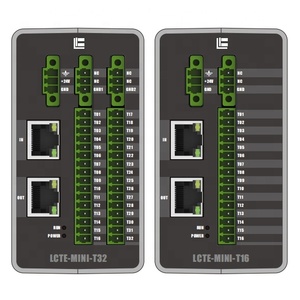

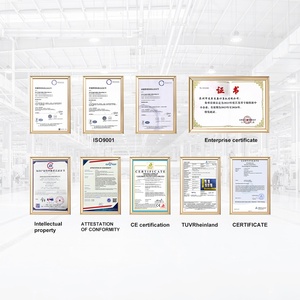
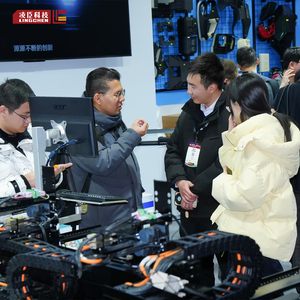
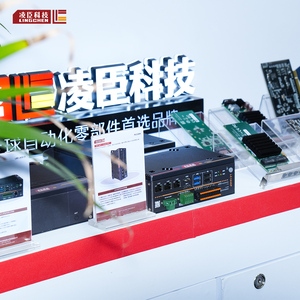



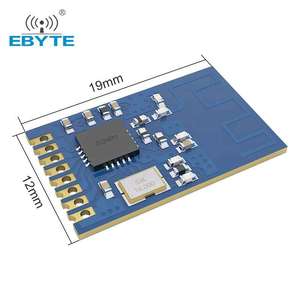








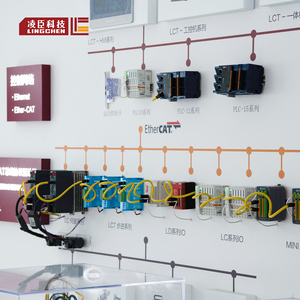

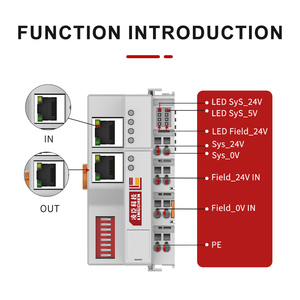














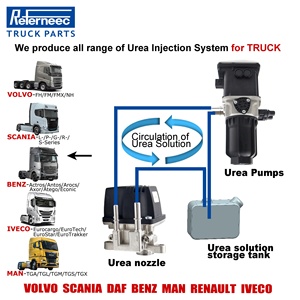


The feed module is an indispensable element, especially in large pipelines and systems. However, these components can come in different types depending on the application's specific need and the general flow of the feed in which they operate.
The following types are:
This type uses a screw mechanism, mostly the helical auger blade, to transport granular or powdered materials. The materials get moved from a storage or hopper source to the intended destination through the rotation of the screw. It is highly efficient when used on tough and dense materials, granting high accuracy in small quantities of supply. The mechanism makes it ideal for materials such as feed, grains, and chemical powders, which should not be clumped.
This kind of feed module employs pumps to move the fluids or slurries through pipes. The pump's strength was dependent on its type (centrifugal or positive displacement) used as the feed module) to provide the needed flow and pressure. Pumps excel at handling fluids where viscosity is a negative factor, and fluids can be processed in a more stable manner without a negative impact on their physical and chemical composition. For this reason, the pump feed module is common in the oil, chemical, and food processing industries.
A Gravimetric Feed module is based on a weigh system that relies on gravity. It measures the mass of the materials g that pass through the module and thus provides an accurate and precise measurement of the materials needed for production processes. In safeguarding the flow of materials, it is complemented by a chute or auger to draw out the weighed materials. It is mainly used when there is ne need to balance the supply very much, such as in the production of chemicals, pharmaceuticals, and food.
This feed module is used in processes where material in certain predetermined quantities should be supplied for processing. Materials are fed into the system in batches through some sources of feed modules, such like gravimetric or volumetric ones. These feed modules are ideal in industries that require certain finite quantities of resources to be processed at a time, such as mixes in concrete production in construction.
This kind of feed module feeds materials with the aid of electromagnetic forces. It contains an electromagnetic coil that generates vibratory motion over the materials-carrying dishes through the application of a magnetic field. It is most commonly used in conveying fine, dry particles that can easily flow. Electromagnetic feed modules are seen as effective equipment in mining, metallurgy, and chemical industries.
Feed modules have much variety in their industrial applications, as follows:
Feed modules are used in the areas of thermal power and nuclear power generation to convey the feed water and other required materials for the process of converting heat energy to power. Steers and maintain the flow and pressure of the feed water within the feed module used in turbines, thus helping to supply the system with its needs while ensuring the safety and operation consistency of the power plants.
In the mining industry, feed modules convey ores, minerals', and other raw materials slurries through pipelines. The feed modules help overcome the dense and abrasive nature of mined materials, helping transport them in large quantities over long distances. In metallurgy, feed modules are used to transport metal concentrates, chemical additives, etc., within the mineral processing and metal extraction industries.
Feed modules are important in all chemical processing industries, where they transport gases and liquids and solid raw materials. In those processes where fluids are involved, the feed modules contribute to moving chemicals through reactors, distillation columns, and other crucial processes. Feed modules in chemicals usually involve the handling of viscous fluids and those that lead to thick deposits with clogs and erosion of the pipeline.
The food and beverage industry utilize feed modules in conveying raw materials like grains, liquids such as milk and juices, and solid processed food ingredients. The pump feed modules commonly used here attributed to their ability to transport delicate materials without altering their original characteristics. Moreover, feed modules supply neutrals to homogenizers, pasteurizers, and other major processing equipment.
Pulp and paper industries use feed modules in transporting wood chips, pulp slurries, chemicals like sodium hydroxide, and other raw materials for the production process. Feed modules overcome the thickness and abrasiveness of the wood chips and pulp and transport these solid liquids over long distances. They also help feed modules convey slurries within the pulp processing and paper manufacturing pipelines.
Feed rates
Feed rate is the quantity of material that is supplied per unit of time. This is usually expressed in volume or mass flow per hour or, in other words, agreed specification. It depends on the material to be processed and how fast the process can go.
Materials compatibility
When choosing feed modules, ensure that the model you select is compatible with the types of materials being passed. This covers both the physical and chemical aspects of the module; the feeder should not react with the elements themselves or wear out due to their nature. This encompasses the erodibility to abrasion, corrosion, chemical reaction, and viscosity.
Pressure and temperature ranges
The pressure and temperature ranges of feed modules depend on the use of the module, which can be employed at high-pressure or high-temperature environments as in oil refining or chemical processing. Understanding the tolerance of the module is critical because operating outside such ranges can result in failure risks or performance degradation.
Capacity and size
Feed module capacity is the measure of the quantity and the size which concerns the physical dimensions of the module. Highly capable feed modules are suitable in large-scale industries, whereas smaller in size modules are used in limited space or low capacity industries. Both factors affect the suitability of the module in given industrial conditions.
The feed module installation procedure depends on the type of feed module and its functioning and the following general considerations:
Position the feed module
The feed module's proper position often depends on the system it has to interface with.- In pump modules, the position of the inlet and outlet has to be aligned with the connected components. Auger or gravimetric modules, for example, require their hopper or storage source to be near the area of delivery.
Secure the feed module
If the feed module is placed in the right position and the mounting brackets or bolts ready, the module is secured. This is done using either bolting or welding for fixed applications. For some other applications involving certain dynamic operations, for example, vibration, the feed module should be dampened.
Connect the inlet and outlet
The next stage is where the feed module is plumbed to the adjacent system. For pump modules, the fluid lines are connected to the inlet and outlet. The material couplings are used to connect the pipes to the auger feed module. Electricals have to be connected to electrochemical feed modules.
Electrical connections
In this case, the power source and control system are linked together with the feed modules that are driven by electricity. This will include the electromagnetic and pump feed modules. For example, activate or calibrate the feed module using sensors or control valves.
Testing
After completing all these activities, one final task is to test the system. When this is done, the feed module should be operated at low to nominal capacity to confirm there is no leakage, no undue vibration occurs, and the module is capable of delivering the designed feed rate.
Regular inspection
It helps to understand the kinds of problems that are likely to arise if, at regular inspections, routine work is well understood. This is done by looking at any signs such as wear, tear, leakage, or vibratory patterns that might indicate a problem. Inspection is important since it serves to prevent many of the identified mechanical failures that can lead to time and production losses as well as safety issues.
Lubrication
Good lubrication of those parts that require it is equally important for the reduction of friction and wear. In the cases, for example, an auger or screw has to be lubricated, the pump has to be primed, and the electromagnetic modules have to be designed for less heat generation. Always ensure all line and module components have enough lubrication to increase longevity and effectiveness.
Component replacement
Often, wearing out parts like seals, gaskets, and pumps are bound to be replaced once they start deteriorating. The feed modules performance will drop lower if any worn out or damaged part is not replaced in time. There must be routine maintenance for the feed module that considers component replacement schedules so that efficiency and functionality are not compromised.
Contamination control
Contamination from either internal or external sources adversely affects the feed module and the material being processed. Dust, debris, and other types of foreign matter in the system lead to wear, tear, and degradation, if not careful. Organizations working with feed modules should have contingency plans for contamination control and the necessary steps to be taken while reducing or removing it.
Software maintenance
Modern feed modules particularly incorporate software-based controls and sensors. It is, therefore, necessary to update and maintain the software to enhance optimal module performance. Testing the system and ensuring data backups and software updates help in improving operational efficiency.
For this feed module, quality and safety considerations include:
Material selection
However, the quality of feed modules is highly dependent on the material from which they are manufactured. Materials should be of such quality that they can withstand wear, tear, and degradation from either mechanical use or chemical interaction. The selection of suitable materials is done in regard to such appropriate applications: stainless steel, high-strength alloys for abrasion resistance, and corrosive rubber polymer composites.
Manufacturing standards
Only modules that meet industrial standards and undergo rigorous testing for durability, strength, and performance are to be sourced. Certification marks, such as ISO or ANSI, indicate the feed modules manufactured with requirements in mind and quality assurance.
Erosion and wear
Feed modules face the problem of erosion and wear, either due to the nature of the materials being processed or as a result of time. Wearing out module components lead to lowered efficiency, lowered flow rates, and possible failure. Anticipating and solving this problem requires using wear-resistant materials, performing maintenance on a continuous basis, replacing worn parts, and using modules with enhanced capability in terms of handling the abrasion.
Leakage detection
Leakages either in fluids or solids can compromise efficiency, generate hazardous conditions, and cause production interruptions. Great attention has been given to leakage detection in feed modules; this involves the use of appropriate technologies such as sensors, alarms, and monitoring systems that immediately detect and respond to leakage and, ideally, physical containment and prompt cleanup of the affected area.
Process control
Process control is equally important in helping maintain the quality through constant adherence to specified standards and the safety of the working environment through avoidance of conditions presumed dangerous. Advanced control systems help to regulate feed rates, pressures, and other critical parameters to reduce chances of overloading, overheating, and underfeeding/overfeeding.
Training and PPE
Training of the operating and maintenance personnel on the do's and don'ts about safely handling feed modules and associated hazards is important. Providing personal protective equipment (PPE) is also required, as is the need to protect workers from exposure to dust, noise, chemicals, or other dangers that may be present.
The feed module's function is to supply or convey material such as solids, liquids, or gases into a processing system. It can use varied mechanisms, such as gravity, pressure, or mechanical means, to move the material per the needs of the given industrial application.
Feed modules can be designed to handle wide materials such as powders, granules, liquids, gases, and slurries. The design and type of feed module to be applied -whether a gravimetric, volumetric, or electrotonic- depend on the physical characteristics of the materials and the needs of the intended applications.
Feed modules can be energy-efficient, depending on specific factors, such as the type of feed module and the materials used. For instance, feed modules, such as those that operate based on gravity, are energy-efficient. Optimization of feed rates and utilization of modern control systems can reduc3e energy consumption.
Yes, feed modules can be designed to operate in extremely high or low temperatures. High-temperature feed modules are common in industries such as metal, chemical, and power. Materials like heat-resistant alloys are used in constructing these modules.
For the feed module to have proper functioning, certain and common maintenance practices should be frequent: routine inspection for wear and tear, lubrication of moving parts, contamination control, and prompt replacement of worn-out components. Proper maintenance improves the feed module's performance and its longevity.